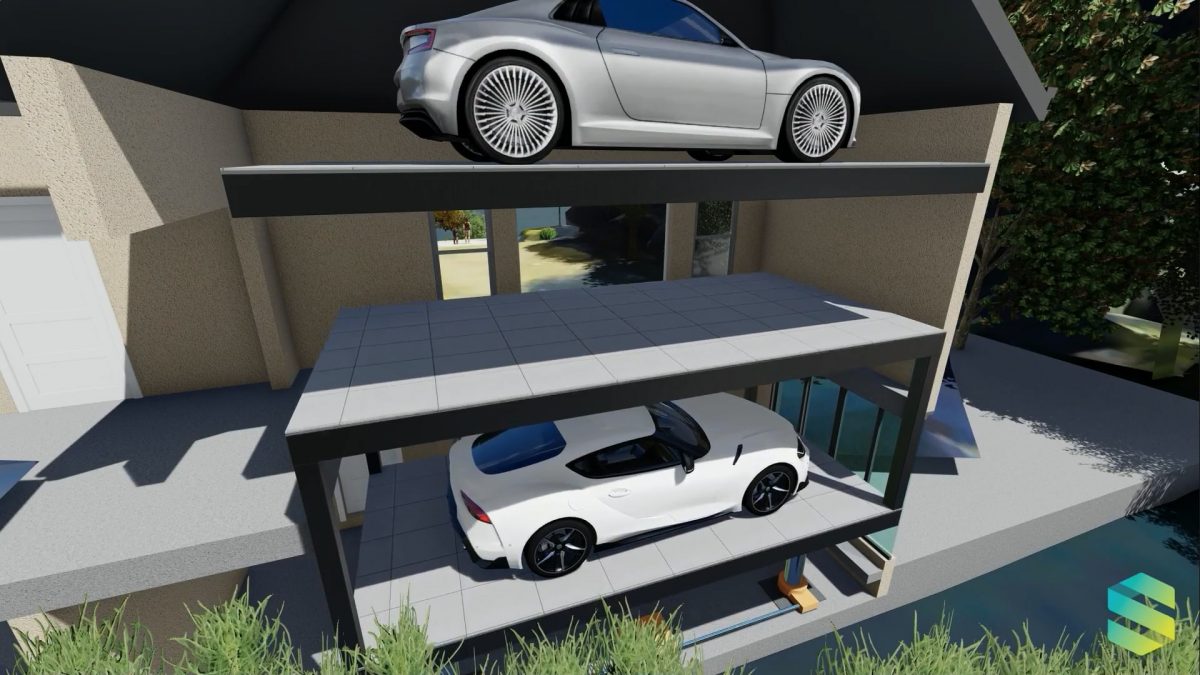
How building information systems and digital twinning enable engineers to design, build, and optimise in an increasingly complex urban environment.
Imagine this; you live in a high-density area in one of the many high-rise apartment buildings springing up in urban centres. From the outside, the building doesn’t appear to be much different from those surrounding it. As you get ready for work and over breakfast, open an app on your phone for the building’s car park. Next, you select a time you want to leave and submit your booking. Then, all you do is ride the elevator down to arrive at the car collection spot near the garage exit at your designated time.
So, while you were finishing breakfast, your order was submitted to the building dashboard; the car stacker computes when it needs to collect your car from the vertical stacks of cars, place it on a conveyor, and have it in the queue to arrive at the garage door for you to jump in and drive off. The same happens at the end of the day; pull up in the building entry dock, park your car on the transfer deck, jump out, and the car stacker does the rest.
Think of an Amazon fulfilment centre, where robots pick and pack orders, but for cars. While this might sound like just another piece of technology that’s nice to have, it’s part of a bigger picture of collectively rethinking how the built environment directly influences people’s lives, work, and play.
Higher density equals more complexity
Building design is evolving beyond meeting a commercial imperative to maximise land use and make an urban area attractive for businesses and residents. Buildings have the power to foster active, connected, and resilient communities, particularly with the demands of climate change, urbanisation, and an ageing population.
Part of the equation focuses on the increasingly complex construction environment. Clever solutions need to be found to make construction feasible and incorporate the features of the next generation of buildings. Dylan Roache, Project Engineer at SOTO Consulting Engineers, has collaborated with an Australian company, Hercules Carparking Systems, to customise and optimise vehicle parking and storage systems for residential and commercial buildings.
Mr Roache says the increasingly stringent regulations and building codes, the complexity of many development sites, and the push for increasing urban density mean that the traditional ways of designing a building are no longer suitable, and underground parking is a glaring example.
“In high-density areas, the days of digging massive holes for extensive underground car parks are almost over. It’s just not viable,” Mr Roache says. “Years ago, maybe one in 20 or more buildings would need a car stacker. Now, it’s cost-effective and necessary.”
Next-generation buildings
The key element of next-generation building design is the car lifts, stackers, turntables, and associated hardware and software that Hercules and SOTO are collaborating to design, manufacture, and install. For example, building Information Modelling (BIM) software allows engineers to design a car stacking system to suit the building and optimise its design before construction starts.
“These days, you can have a building built virtually, before selecting the site you want it to land on, essentially,” Mr Roache says. “With BIM, a complete virtual model of a building allows everyone engaged in the design of that building to work collaboratively inside that model. The result is quality design, time savings, fewer defects, and reduced construction costs.”
For the car stackers, BIM allows SOTO and Hercules to provide bespoke complete parking systems for residential or commercial buildings, with design, fabrication, and installation fully integrated into the building construction timeframes.
“From the initial architectural concepts, Hercules undertakes the initial arrangement and layout, and then SOTO places our model inside the primary building model. Then, we can coordinate with the builders and contractors within the one model to determine the placement of everything in that space, like services, ductwork, and even fire sprinklers.”
Digital twinning
While digital tools like BIM enable builders to tackle complex construction and optimise designs, it creates a mountain of data that changes how the building is used. The building’s energy systems and sensors data are collated into a digital twin model.
The digital twin is a living model of real-time data about patterns in energy use, people movement, structural integrity, maintenance, and more. It creates a centralised dashboard that tells building owners and asset managers everything they need to know about its performance. They can predict energy usage patterns, schedule maintenance, optimise comfort, and so on.
“As the building is used more by the occupants, it becomes more of a living thing, and you can adapt to make it more comfortable, more efficient, and more adaptable to change,” Mr Roache said.
Adapting to the complex and sometimes competing needs of the modern world means buildings need to change. How they are designed, built, and used, unlocking their potential to contribute to inclusive, resilient, and sustainable cities.
“I see this as improving the quality of our future building stock. It’s about better use of space and resources and better outcomes for occupants. Architects, builders, engineers, and suppliers with the skills and expertise to leverage the digital world are the people who will drive design solutions where the built environment adapts and responds to the needs of tomorrow.”


